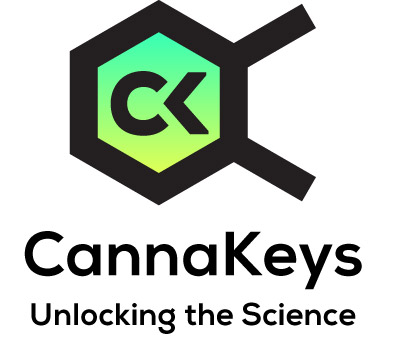Tetrahydrocannabinol (THC) Research Dashboard
What am I missing as a non-subscriber?
To see a full dashboard with study details and filtering, go to our DEMO page.
As a subscriber, you will be able to access dashboard insights including chemotype overviews and dosing summaries for medical conditions and organ system and receptor breakdowns for cannabinoid and terpene searches. Study lists present important guidance including dosing and chemotype information with the ability to drill down to the published material. And all outputs are fully filterable, to help find just the information you need. Stay up-to-date with the science of cannabis and the endocannabinoid system with CannaKeys.
CannaKeys has 1780 studies associated with Tetrahydrocannabinol (THC).
Here is a small sampling of Tetrahydrocannabinol (THC) studies by title:
- Cannabis induced gastrointestinal tract symptoms in the adult population: a systematic review
- The acute effects of cannabis, with and without cannabidiol, on attentional bias to cannabis related cues: a randomised, double-blind, placebo-controlled, cross-over study
- Vaporized Cannabis versus Placebo for Acute Migraine: A Randomized Controlled Trial
- Pharmacokinetics and pharmacodynamics of cannabis-based medicine in a patient population included in a randomized, placebo-controlled, clinical trial
- Δ9-Tetrahydrocannabinol (THC): A Critical Overview of Recent Clinical Trials and Suggested Guidelines for Future Research
Components of the Tetrahydrocannabinol (THC) Research Dashboard
- Top medical conditions associated with Tetrahydrocannabinol (THC)
- Proven effects in clinical trials for Tetrahydrocannabinol (THC)
- Receptors associated with Tetrahydrocannabinol (THC)
- Individual study details for Tetrahydrocannabinol (THC)
Ready to become a subscriber? Go to our PRICING page.
Page Quick Links
Select New Cannabinoid
Overview - Tetrahydrocannabinol (THC)
Description of Tetrahydrocannabinol (THC)
The plant-based (phytocannabinoid) delta-9-tetrahydrocannabinol (delta-9-THC) was discovered in 1964, and by 2016 thirty-one distinct members of this family had been identified. THC is primarily (but not exclusively) responsible for many therapeutic and adverse mind-altering effects of the plant. THC is the most studied of all cannabis constituents. THC is exclusive to cannabis, but it is also produced synthetically.
Here we focus on delta-9-THC.
Other Names:
Delta 9-TetrahydrocannabinolDelta-9-THC
Dronabinol (Marinol®, Syndros®) are a synthetic version of delta-9-THC (other supplier-based synonyms)
IUPAC Name: (6aR,10aR)-6,6,9-trimethyl-3-pentyl-6a,7,8,10a-tetrahydrobenzo[c]chromen-1-ol
Molecular Formula: C21H30O2
Source–PubChem
Nabilone (Cesamet®) is a synthetic version of delta-9-THC (other supplier-based synonyms)
IUPAC Name: (6aR,10aR)-1-hydroxy-6,6-dimethyl-3-(2-methyloctan-2-yl)-7,8,10,10a-tetrahydro-6aH-benzo[c]chromen-9-one
Molecular Formula: C24H36O3
Source–PubChem
Tetrahydrocannabinol (THC) Properties and Effects
Only Members can view Properties and Effects information. See DEMO page.
Tetrahydrocannabinol (THC) Receptor Binding
Only Members can view Receptor Binding information. See DEMO page.
Disclaimer
Information on this site is provided for informational purposes only and is not meant to substitute for the advice provided by your own licensed physician or other medical professional. You
should not use the information contained herein for diagnosing or treating a health problem or disease. If using a product, you should read carefully all product packaging. If you have or suspect that you have a
medical problem, promptly contact your health care provider.
Information on this site is based on scientific studies (human, animal, or in vitro), clinical experience, or traditional usage as cited in each article. The results reported may not necessarily occur in all individuals. For many of the conditions discussed, treatment with prescription or over-the-counter medication is also available. Consult your physician, nutritionally oriented health care practitioner, and/or pharmacist for any health problem and before using any supplements or before making any changes in prescribed medications.

